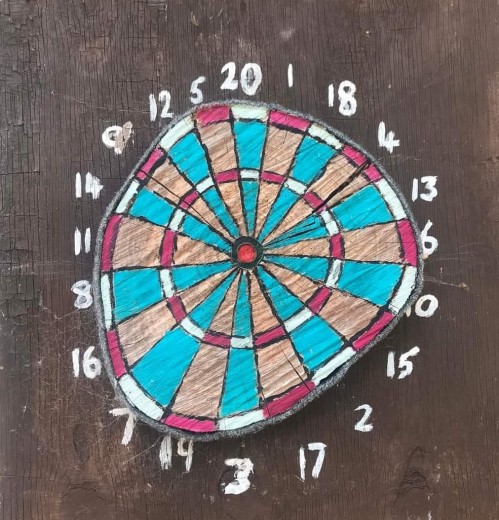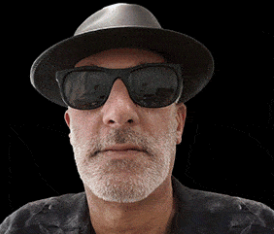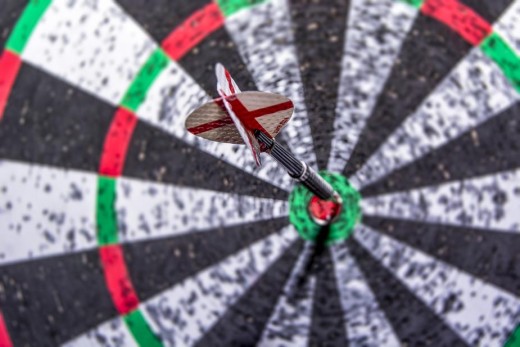Wednesday, January 5, 2011
Column 401
Drag Queens, Darts and the Old Dart Coach in Key West
In the last installment of Dartoid’s World I found myself in Ulaanbatar, Mongolia – the coldest national capital on the planet. Somewhere in the countryside yaks wandered the frozen tundra while I pounded the board with new-found friends at the Axis Grill Pub.
This month’s search for elusive Holy Grail – the perfect game in the perfect darts-dive (and of course, the perfect beer) brought me to the tropics, 7,500 miles as the crow flies to the opposite end of the planet: the famous Green Parrot Bar (601 Whitehead) in Key West, Florida. The closest I came to a yak – or better put, yakking – was watching Marilyn Daniels sing and dance just up the road at “801 Bourbon Street” (on Duval).
Marilyn, a former soccer player named Mitch or Mike or Mervin or who the hell knows, headlines the world famous drag cabaret at Bourbon Street. Of course, I am only kidding about yakking – Daniels and her cast are flat-out phenomenal performers. The show here completely outclasses the darts scene on this southernmost four by two mile speck of land in the continental United States. I can’t possibly recommend the show highly enough.
While there was an active darts league in Key West – the Conch Republic Dart Association (CRDA) – I was unable to make contact with anybody formerly connected with the league and could only find remnants of what once existed. The CRDA website has not been updated since 1997. Years ago there were seven island establishments that sponsored teams – Coconut’s Lounge, Knucklehead’s Bar and Grill, Seawitch Lounge, Charlie’s Place, Stick and Stein’s Sports Rock Café, Tortuga Bay Restaurant and the Green Parrot, the latter which sponsored two teams. I peeked in the doors of a few of them but only the Green Parrot is worthy of a visit today.
Tour operators and even the bartenders at the Green Parrot will tell you it’s the oldest bar in Key West, opened in 1890. This is not true. The building was actually a grocery store until sometime in the 1920s. For several decades it was operated as a bar under the name Brown Derby. What is today known as the Green Parrot – and what in 2000 was rated by Playboy magazine as one of the Best Bars in America – was founded as a bar and sub shop in 1970 (it submarined the subs in 1980).
Playboy recognized the bar for its “down-home, funky, ethnic and shit-kicker” ambiance and, noting the décor, observed that “the decorations are whatever the customers are wearing.” This is pretty much what my wife Marylou and I found when we wandered in and found the dartboard – and while our two dogs, Bentley and Romy, chewed up the carpet back at our vacation cottage.
There is only one board at the Green Parrot, in the back right corner, but the set up is great and cozy. Above the board is an old poster from a one-night exhibition Eric Bristow gave just after he won his fifth world championship in 1986.
I popped a Blackberry message to John Lowe from the bar to find out exactly what year Bristow visited and Lowe passed my question on to the Crafty One.
But I didn’t hear back…
This is probably because Bristow still harbors ill feelings towards me for calling him a “wanker” in an old column and likening his profile to the Geico gecko in one of my books. So I threw for a while, sampled a few beers, tore down Bristow’s poster and then headed out to do the tourist thing.
As it happens, drag queens and the lack of a darts scene are not the only things happening (or not happening) in Key West – although for me Marilyn Daniels’ show and the Green Parrot’s darts nook were my favorite Key West experiences.
One of the must-do things to do is a Conch Train tour. The popular little train-like coach meanders about the island for a couple of hours and is the quickest and most delightful way to educate oneself on the history of Key West or Cayo Hueso (“Bone Key” – the original Spanish name for the island dating back to 1521 when Juan Ponce de Leon first stepped ashore). Cayo Hueso is pronounced “kajo weso” – hence from where, when anglicized, the island got its name. Apparently when de Leon arrived the land was littered with remains from a Native American battlefield – so he christened it Bone Key.
The Conch train took us by Ernest Hemingway’s house where he wrote For Whom the Bell Tolls and The Snows of Kilimanjaro. Today descendents of his six-toed cat Snowball still live on the property. The train drove us by La Concha Hotel where Tennessee Williams wrote A Streetcar Named Desire. We passed the Southernmost Grill (where we later had an unbelievable dinner) which is just 90 miles from Havana and almost 150 miles from the closest Wall Mart. We passed the Winter White House where Harry Truman spent almost six months of his presidency. We saw dozens of free-roaming chickens who wander everywhere – so I guess they get along with Hemingway’s cats. We even drove slowly by the Green Parrot (I nearly hopped off the train).
There are three ways to get to Key West: by boat, plane or car. The four-hour 100-plus mile drive along US Highway 1 from Miami bisects the Atlantic Ocean and the Gulf of Mexico and crosses 42 bridges as it traces an old Florida East Coast Railroad trail that was wiped out in many places by a hurricane in 1935. Much of the railroad track still stands in a dilapidated state. The drive at sunrise or sunset (we did both) through wilderness and by the ever-changing scenery of the sea is spectacular.
We tried several restaurants (and all the bars) and hit every gift shop on the island. Of course we stopped at Jimmy Buffet’s Margaritaville Grill for a Cheeseburger in Paradise. We tried the highly recommended and outrageously priced Blue Heaven and were disappointed. The ambience at Hot Tin Roof at sunset is as extraordinary as the fare. But the Southernmost Grill is as good as it gets. As far as the bars go, well, this brings me back to the Green Parrot…
Upon departing I learned one more tidbit about darts history in Key West, a little known and long forgotten chapter in the book of Green Parrot lore…
In the late 1980’s (the minds of those involved are even less clear today than they were then – so the specific year is lost forever) none other than the Old Dart Coach himself, Howie Reed, visited to call an exhibition by Wade McDonald at the Green Parrot. On their way from the North American Open Darts Tournament and en route to the first tournament to be held in the Bahamas, Reed and McDonald were booked by Watneys to do the Green Parrot show. McDonald and someone else (whose name is also long forgotten) each were to take on ten of the locals. Reed was to emcee and call the exhibition.
August in Key West is HOT but the team (Reed in shorts, tuxedo shirt, vest and tie) managed fine thanks to free-flowing adult beverages. At the end of the show, completely worn out and sweating, Reed staggered to the bar for another beer and a shot of Schnapps…
“A male person came up to tell me how great I was. He offered to buy me as drink which I gratefully accepted. I excused myself saying ‘I have to change clothes.’ The change room was the beer locker directly across from the bar and the stool upon which I was seated. I got up, went to the beer locker, opened the door, entered and, I thought, closed the heavy insulated door behind me.”
“When I bent over to untie my shoes I felt a breeze. Looking between my legs I saw this aforementioned male person. ‘Need some help?’ he asked.”
“‘No!’ I replied, loud and clear. He left.”
“When I finished changing and got back to the bar some people were laughing hysterically. Someone said, ‘You don’t know about Key West do you?’”
“Nope! Sure didn’t. But I do now!”
(For the record, Dartoid’s World was unable to confirm that Marilyn Daniels was in the Green Parrot this particular evening.)
From the Field,
Dartoid




